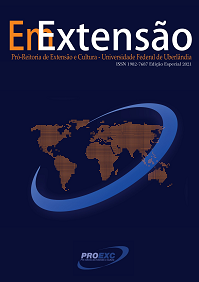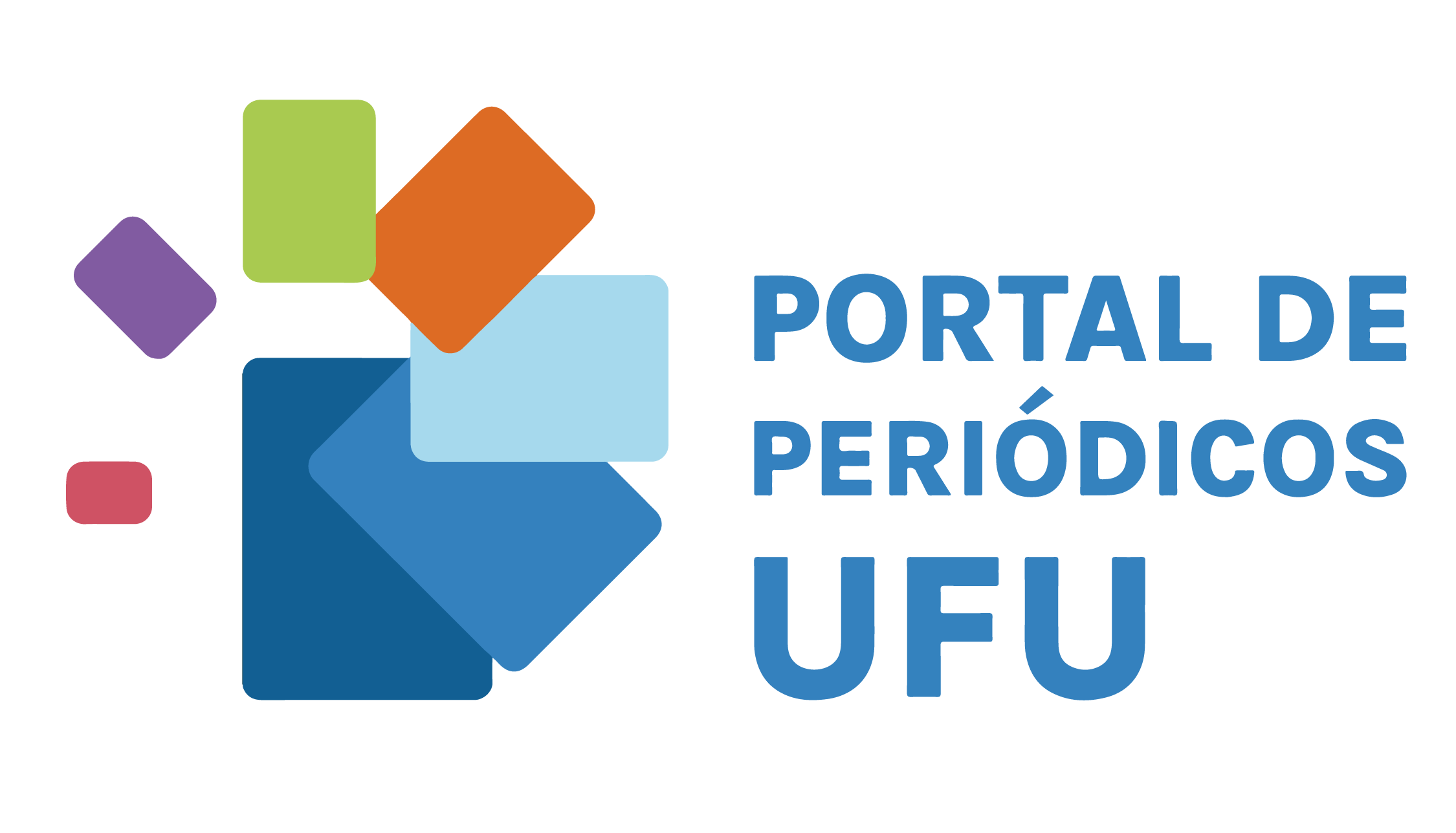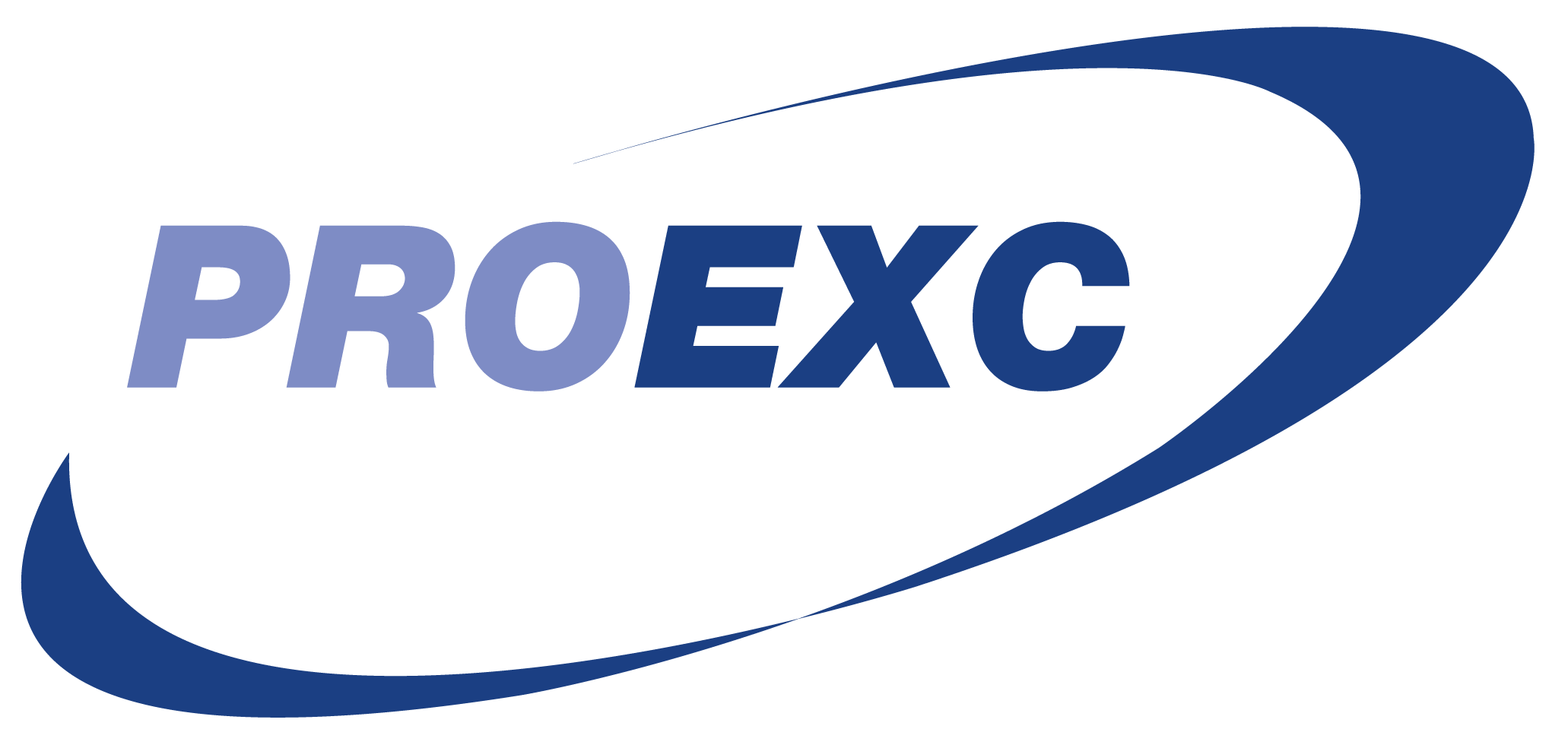Central de Atendimento Covid-19 UEMG-Passos
DOI:
https://doi.org/10.14393/REE-v0n00-63023Palavras-chave:
Divulgação científica, COVID-19Resumo
A divulgação científica corresponde à transposição do discurso científico para a população em geral, permitindo a disseminação de fatos científicos por meio de uma comunicação simples e acessível. Tendo em vista a atual situação do mundo frente à pandemia do novo Coronavírus, manter a população informada se torna, mais do que nunca, papel fundamental das universidades. Por se tratar de situações novas e inesperadas, as dúvidas e a disseminação de notícias erradas são muito frequentes, evidenciando a necessidade de canais de comunicação seguros e de fácil entendimento. Assim, o objetivo da Central de Atendimento Covid-19 UEMG-Passos foi levar informações embasadas em conhecimentos científicos, de uma forma lúdica, para a população geral que utiliza as redes sociais. Para tal, foram produzidos recursos audiovisuais por meio do software on-line Animaker. Espera-se contribuir para disseminação de conhecimento sobre o vírus, a doença e suas consequências, ajudando a consolidar o papel da universidade como reflexo e agente transformador da sociedade.
Downloads
Referências
AHN, D. G. et al. Current status of epidemiology, diagnosis, therapeutics, and vaccines for novel coronavirus disease 2019 (COVID-19). Journal of Microbiology and Biotechnology, Seoul, v. 30, n. 3, p. 313-324, mar. 2020. Doi: 10.4014/jmb.2003.03011. Disponível em: https://pubmed.ncbi.nlm.nih.gov/32238757/. Acesso em: 30 ago. 2021.
BANERJEE, K. et al. The battle against COVID 19 pandemic: what we need to know before we “Test Fire” Ivermectin. Drug Res (Stuttg), Stuttgart, v. 70, n. 8, p. 337-340, 2020. Doi: 10.1055/a-1185-8913. Disponível em: https://www.thieme-connect.de/products/ejournals/abstract/10.1055/a-1185-8913. Acesso em: 30 ago. 2021.
BROWN, B. L.; MCCULLOUGH, J. Treatment for emerging viruses: convalescent plasma and COVID-19. Transfusion and Apheresis Science, Oxford, v. 59, n. 3, p. 102790, 2020. Doi: 10.1016/j.transci.2020.102790. Disponível em: https://www.trasci.com/article/S1473-0502(20)30079-3/fulltext. Acesso em: 10 set. 2021.
CALY, L. et al. The FDA-approved drug Ivermectin inhibits the replication of SARS-CoV-2 in vitro. Antiviral Research, Amsterdam, v. 178, p. 104.787, 2020. Doi: 10.1016/j.antiviral.2020.104787. Disponível em: https://www.sciencedirect.com/science/article/pii/S0166354220302011?via%3Dihub. Acesso em: 10 set. 2021.
CASCELLA, M. et al. Features, Evaluation and Treatment Coronavirus (COVID-19). Treasure Island (FL): StatPearls Publishing, 2020.
FERRETTI, L. et al. Quantifying SARS-CoV-2 transmission suggests epidemic control with digital contact tracing. Science, Washington, v. 368, n. 6.491, p. eabb6936, 2020. Doi: 10.1126/science.abb6936. Disponível em: https://www.science.org/doi/10.1126/science.abb6936. Acesso em: 10 set. 2021.
GHAEBI, M. et al. Vaccine development and therapeutic design for 2019-nCoV/SARS-CoV-2: challenges and chances. Journal of Cellular Physiology, Philadelphia, v. 235, n. 12, p. 9.098-9.109, 2020. Doi: https://doi.org/10.1002/jcp.29771. Disponível em: https://onlinelibrary.wiley.com/journal/10974652. Acesso em: 15 ago. 2021.
GEMELLI AGAINST COVID-19 POST-ACUTE CARE STUDY GROUP. Post-COVID-19 global health strategies: the need for an interdisciplinary approach. Aging Clin Exp Res, Milan, v. 32, n. 8, p. 1.613-1.620, 2020. Doi: 10.1007/s40520-020-01616-x. Disponível em: https://link.springer.com/article/10.1007%2Fs40520-020-01616-x. Acesso em: 15 ago. 2021.
GRANT, W. B. et al. Evidence that Vitamin D supplementation could reduce risk of influenza and COVID-19 infections and deaths. Nutrients, Basel, v. 12, n. 4, p. 988, 2020. Doi: 10.3390/nu12040988. Disponível em: https://www.mdpi.com/2072-6643/12/4/988. Acesso em: 15 ago. 2021.
IDDIR, M. et al. Strengthening the immune system and reducing inflammation and oxidative stress through diet and nutrition: considerations during the covid-19 crisis. Nutrients, Basel, v. 12, n. 6, p. 1562, 2020. Doi: https://doi.org/10.3390/nu12061562. Disponível em: https://www.mdpi.com/2072-6643/12/6/1562. Acesso em: 15 ago. 2021.
LATIF, M. Z. et al. Use of smartphones and social media in medical education: trends, advantages, challenges and barriers. Acta Informatica Medica, [s. l.], v. 27, n. 2, p. 133-138, 2019. Doi: 10.5455/aim.2019.27.133-138. Disponível em: https://www.ejmanager.com/mnstemps/6/6-1559993186.pdf?t=1634676199. Acesso em: 15 ago. 2021.
MOMEKOV, G.; DENITSA, M. Ivermectin as a potential COVID-19 treatment from the pharmacokinetic point of view: antiviral levels are not likely attainable with known dosing regimens. Biotechnology & Biotechnological Equipment, [s. l.], v. 34, n. 1, p. 469-474, 2020. Doi: 10.1080/13102818.2020.1775118. Disponível em: https://www.tandfonline.com/doi/full/10.1080/13102818.2020.1775118. Acesso em: 15 ago. 2021.
NAKSUK, N.; LAZAR, S.; PEERAPHATDIT, T. B. Cardiac safety of off-label COVID-19 drug therapy: a review and proposed monitoring protocol. European Heart Journal, London, v. 9, n. 3, p. 215-221, 2020. Doi: 10.1177/2048872620922784. Disponível em: https://academic.oup.com/ehjacc/article/9/3/215/5922460. Acesso em: 18 ago. 2021.
MERCEDES NETO et al. Fake news no cenário da pandemia de Covid-19. Cogitare Enfermagem, Curitiba, v. 25, p. e72627, 2020. Doi: 10.5380/ce.v25i0.72627. Disponível em: https://revistas.ufpr.br/cogitare/article/view/72627. Acesso em: 18 ago. 2021.
ORGANIZAÇÃO PAN-AMERICANA DA SAÚDE - OPAS. Adolescentes e COVID-19. Brasília, DF, 2020. Disponível em: https://who.canto.global/s/LFC5B?viewIndex=0&from=fitView&display=curatedView. Acesso em: 15 ago. 2021.
ORGANIZAÇÃO PAN-AMERICANA DA SAÚDE - OPAS. Perguntas e respostas COVID-19. Brasília, DF, 2020. Disponível em: https://www.paho.org/pt/covid19. Acesso em: 15 ago. 2021.
ORGANIZAÇÃO PAN-AMERICANA DA SAÚDE - OPAS. Pessoas idosas e COVID-19. Brasília, DF, 2020. Disponível em: https://who.canto.global/s/JIGOC?viewIndex=0&from=fitView&display=curatedView. Acesos em: 25 ago. 2021.
ORGANIZAÇÃO MUNDIAL DA SAÚDE - OMS. Situação epidemiológica. Brasília, DF, 2021. Disponível em: https://covid19.who.int/. Acesso em: 18 ago. 2021.
ORGANIZAÇÃO MUNDIAL DA SAÚDE - OMS. Covid-19: informações essenciais. Brasília, DF, 2021. Disponível em: https://covid19.who.int/. Acesso em: 20 ago. 2021.
SANGIOGO, F. A. et al. Ciência para crianças: COVID-19 como temática para a alfabetização científica. Revista Thema, Pelotas, v. 20, p. 55-72, 2021. Doi: 10.15536/thema.V20.Especial.2021.55-72.1862. Disponível em: https://periodicos.ifsul.edu.br/index.php/thema/article/view/1862. Acesso em: c.
SHI, J. et al. Susceptibility of ferrets, cats, dogs, and other domesticated animals to SARS–coronavirus 2. Science, Washington, v. 368, n. 6.494, p. 1016-1020, 2020. Doi: 10.1126/science.abb7015. Disponível em: https://www.science.org/doi/10.1126/science.abb7015. Acesso em: 15 ago. 2021.
SIMONNET, A. et al. High prevalence of obesity in Severe Acute Respiratory Syndrome Coronavirus-2 (SARS-CoV-2) requiring invasive mechanical ventilation. International Journal of Obesity, London, v. 28, n. 7, p. 1195-1199, 2020. Doi: 10.1002/oby.22831. Disponível em: https://onlinelibrary.wiley.com/doi/10.1002/oby.22831. Acesso em: 18 ago. 2021.
SOUTH, A. M.; DIZ, D. I.; CHAPPELL, M. C. COVID-19, ACE2, and the cardiovascular consequences. American Journal of Physiology-Heart and Circulatory Physiology, Rockville, v. 318, n. 5, p. H1084-H1090, 2020. Doi: 10.1152/ajpheart.00217.2020. Disponível em: https://journals.physiology.org/doi/full/10.1152/ajpheart.00217.2020. Acesso em: 10 ago. 2021.
TUFAN, A.; GÜLER, A. A.; MATUCCI-CERINIC, M. COVID-19, immune system response, hyper inflammation and repurposing antirheumatic drugs. Turk J Med Sci, Florence, v. 50, p. 620-632, 2020. Doi: 10.3906/sag-2004-168. Disponível em: https://journals.tubitak.gov.tr/medical/issues/sag-20-50-si-1/sag-50-si-1-19-2004-168.pdf. Acesso em: 15 ago. 2021.
WEST, R. et al. Applying principles of behaviour change to reduce SARS-CoV-2 transmission. Nature Human Behaviour, London, v. 4, p. 451-459, 2020. Disponível em: https://www.nature.com/articles/s41562-020-0887-9. Acesso em: 18 ago. 2021.
ZBINDEN-FONCEA, H. et al. Does high cardiorespiratory fitness confer some protection against proinflammatory responses after infection by SARS-CoV-2? International Journal of Obesity, London, v. 28, n. 8, p. 1378-1381, 2020. Doi: 10.1002/oby.22849. Disponível em: https://onlinelibrary.wiley.com/doi/10.1002/oby.22849. Acesso em: 15 ago. 2021.
Downloads
Publicado
Edição
Seção
Licença
Ao publicarem nesta revista, os autores concordam em manter os direitos autorais e concedem à revista o direito de primeira publicação, com o trabalho simultaneamente licenciado sob a licença Creative Commons Atribuição-NãoComercial-SemDerivações 4.0 Internacional.





